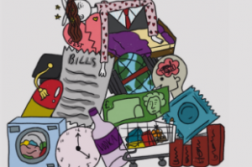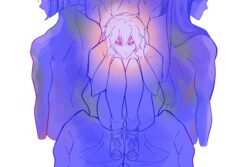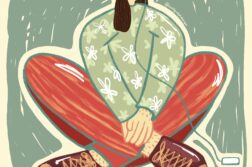When thinking about 18th-century Black history, our minds might turn to the horrors of the transatlantic slave trade and the torture of West Indian sugar plantations. Yet, this period of history offers a paradox to the treatment of Black people in the British Atlantic World, as at the same time that they were treated as property, a significant number of Black communities were springing up in Britain itself, especially in the capital. With at least 5,000 Black individuals in London, they were not an uncommon sight in society, with one contemporary writer commenting ‘every man who has ever stepped beyond the place of his birth has seen them’. This period of British history, then, was not as white as you might have thought.
Slavery in Britain
Most Black people living in London were Africans who had been slaves in the West Indies before being brought to Britain by their masters to act as their personal servants. They bore brands burned into their skin to identify them as human property, many wore collars, with one London merchant advertising his selection of ‘silver padlocks for Blacks or Dogs; collars, etc’ in a local newspaper.
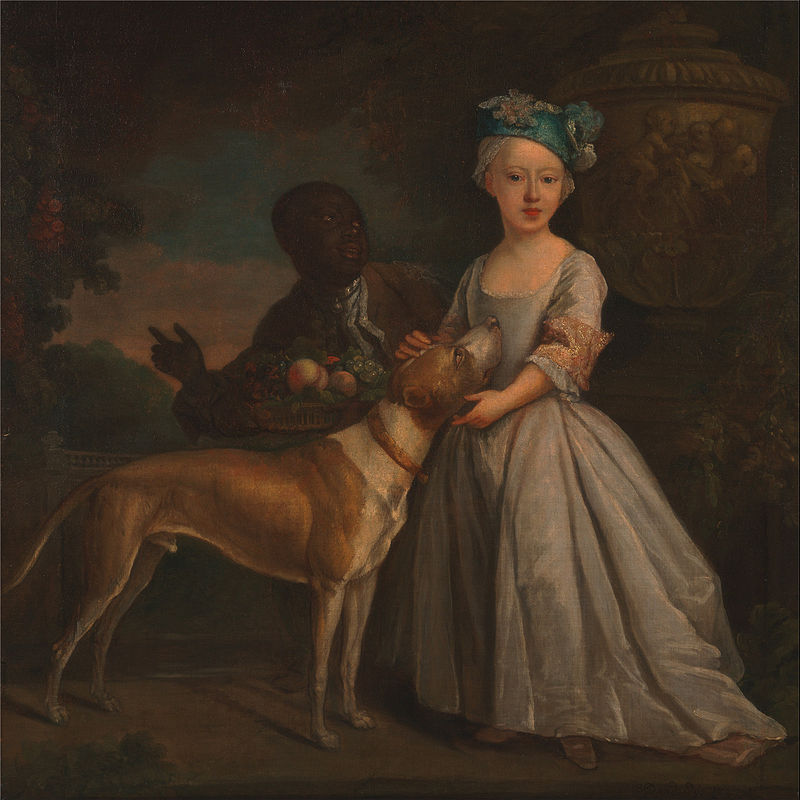
Unsurprisingly, many fled slavery, relying on other escaped slaves and sympathetic white people for protection. Around them, a free Black community developed in the heart of a nation that was building its wealth off of Black slave labour. ‘Hue and Cry’ advertisements in newspapers, which sought to recapture slaves, gave a wealth of information about the escapees, and have been digitised by The Runaway Slaves in Britain database. This is some of the only evidence that we have about the life of an average Black Briton at the time.
Others slaves stayed and served their masters among an entourage of white workers. Some were paid a wage – something that ‘Hue and Cry’ notices sometimes promised to runaways to persuade them to return. Francis Barber and Jack Beef worked for aristocrats in central London, becoming integral parts of their households, with Barber receiving £750 from his master, Samuel Johnson, upon his death. But such ‘benevolent’ masters were no saints, with Johnson believing that Blacks were ‘a race naturally inferior’ to whites.
Black Communities
Whilst waiting on their white masters and their visitors at social events, it was common for Black slaves to become friends. They also tended to meet up with one another: a visitor of Samuel Johnson’s found Francis Barber and ‘a group of his African countrymen […] sitting round a fire in the gloomy anti-room’. They also met in pubs and taverns, creating their own spaces. The most famous case of this happened in 1764, when
no less than fifty-seven of them, men and women, supped, drank and entertained themselves with dancing and music, consisting of violins, French horns, and other instruments, at a public-house in Fleet-street, till four in the morning.
Significantly, ‘No Whites were allowed to be present, for all the performers were Blacks’, according to the reporting newspaper, suggesting that the pub may have been owned or at least managed by a Black publican with the authority to make such a controversial business choice for the time. All-Black balls also frequently cropped up, and were one of the highlights of Georgian entertainment. However, many people lived in poverty, just as the majority of London did, so these gatherings show just one aspect of Black social life. Unfortunately, due to a lack of documentation, little is known about these other individuals.
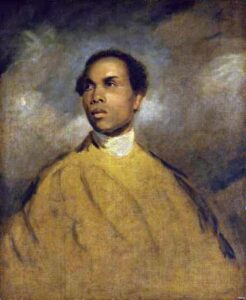
Wider integration
Black Londoners also integrated themselves into white society to a large extent, including most clearly through interracial marriages. Around four in five of the Black population were men, as a the result of the high demand for Black male labour over female, meaning that, for Black men, interracial marriage was typical, with those of Olaudah Equiano, Ukawsaw Gronniosaw and Jack Ystumillyn being famous examples. Francis Barber married a white woman as well, named Elizabeth. Less common, and harder to find, were marriages between Black women and white men, however these also took place: Rebecca Akers married the abolitionist James Ramsay, whilst Dido Elizabeth Belle married John Davinier.
Meanwhile, the Black slaves working alongside white workers were often friendly with each other. Francis Barber, for instance, received an annual invite to a servant party in Streatham, suggesting that he was well-liked there. Jack Beef frequently attended the theatre with his fellow white servants and enjoyed going riding with them in the countryside. When he died, the majority of the white servants were present at his funeral. Meanwhile, more economically fortunate Black Londoners, like the abolitionist Olaudah Equiano and the grocer Ignatius Sancho, were well integrated into the higher echelons of Britain’s middle and upper classes.

Of course, racial prejudice existed in Georgian Britain, although not in the same way as the pseudo-scientific racism of the Victorian era. Many certainly believed that Black people were inferior to whites, especially defenders of the slave trade. But, as Roxanne Wheeler argues in The Complexion of Race, a study on approaches to race in Georgian Britain, ‘older conceptions of Christianity, civility, and rank’ were more important in Britons’ assessments of themselves and others than ‘physical attributes such as skin colour, shape of the nose, or texture of the hair’. Furthermore, Georgian Britain was built on the oppression of the lower classes, prompting historians like Norma Myers, James Walvin and David Babydeen, to suggest that a sense of solidarity existed regardless of racial lines.

